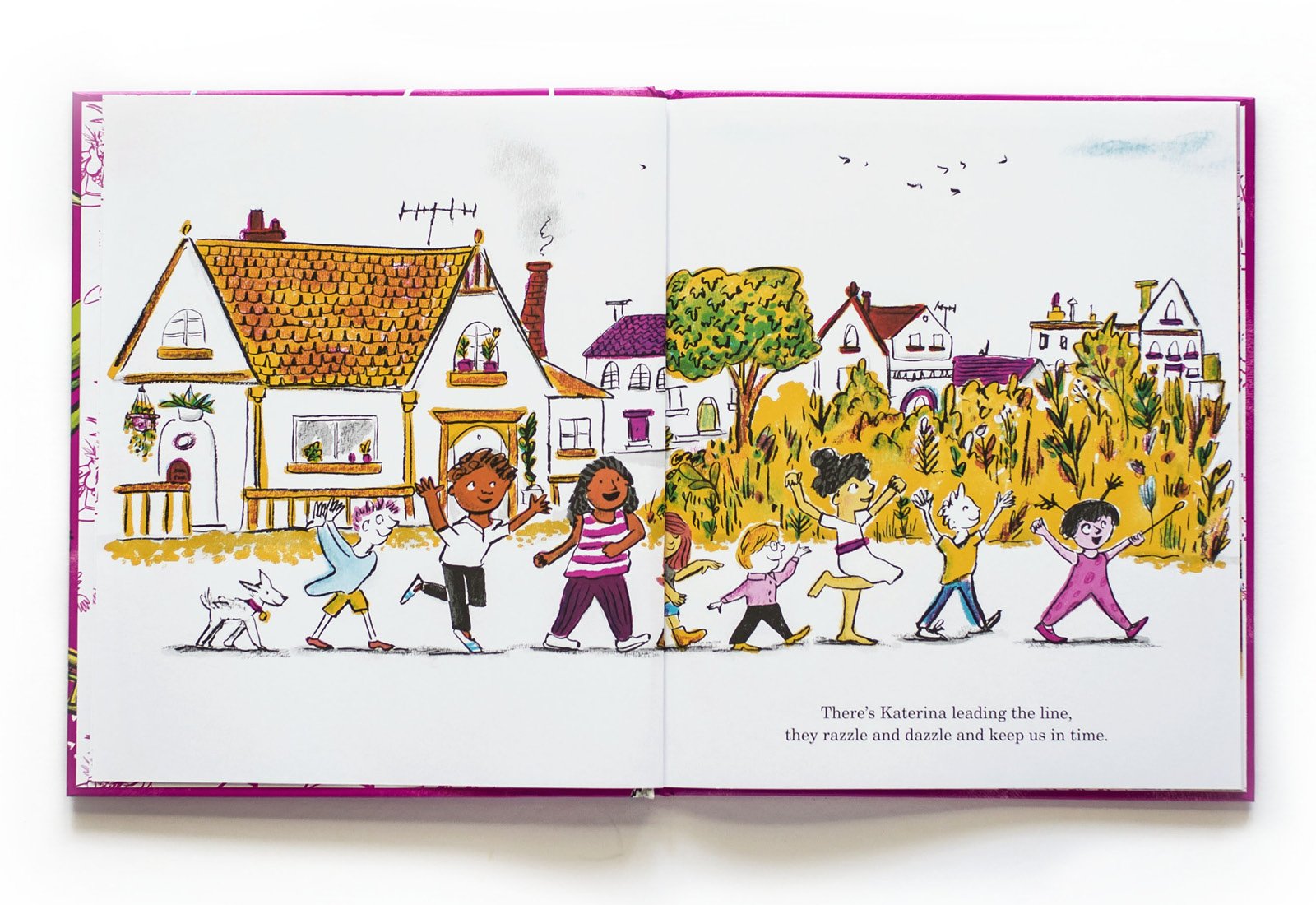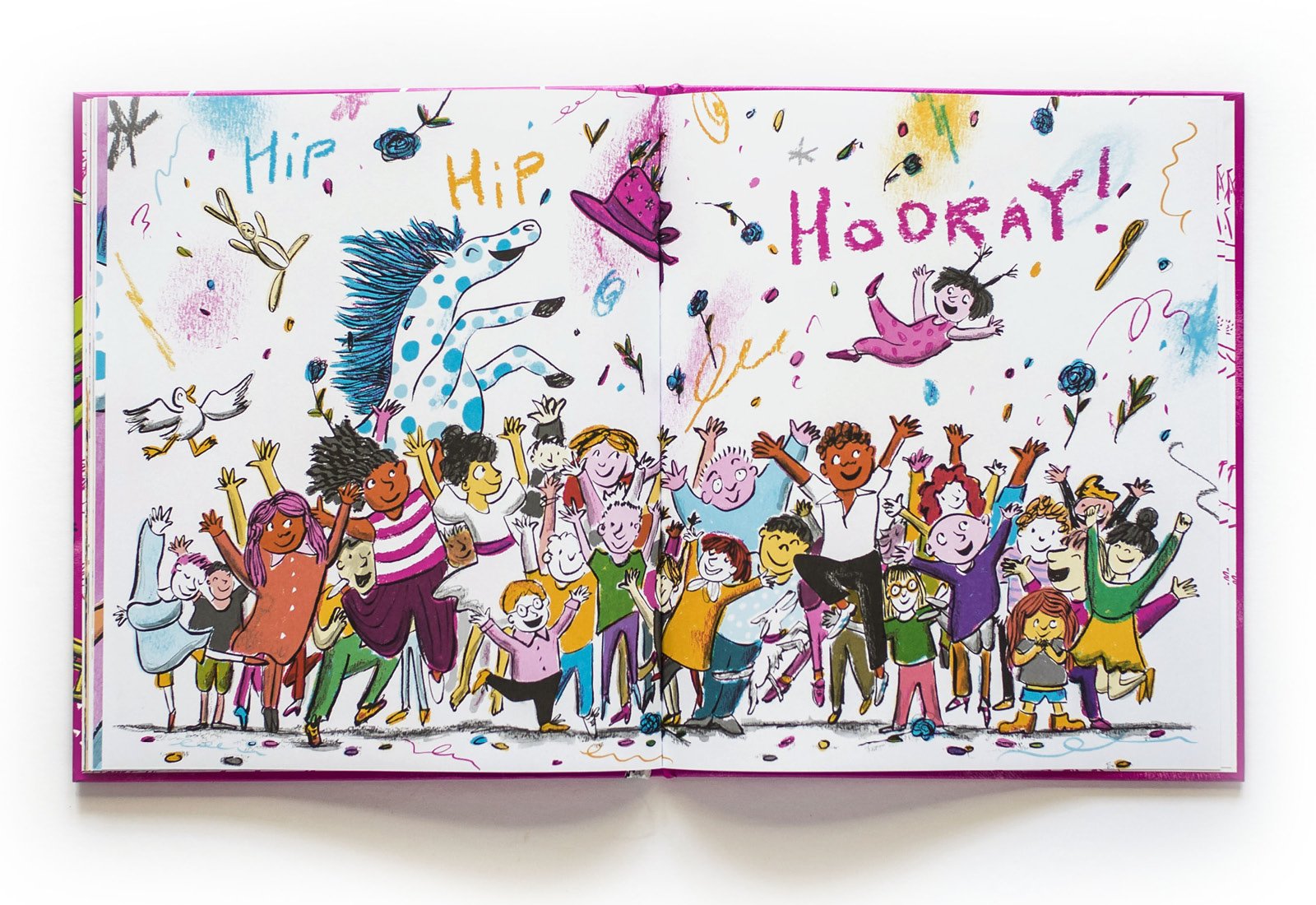Chatting Katerina Cruickshanks with Daniel Gray-Barnett
Hi Scribblers,
With Katerina Cruickshanks coming out soon in the US and UK, we thought it was about time we gave you all some insight into how the book came to be! We hope that you (and your kids) find some joy and inspiration in Daniel’s passion for stories and artistry. Everyone here at Scribble loves KC and their willingness to unabashedly be themselves, and we hope that they can give some readers the confidence to do the same!
Meet the Author
Daniel Gray-Barnett is an illustrator and author from the Huon Valley in Lutruwita/Tasmania. He likes to think of himself as someone who was put on this planet to tell a few stories before he turns into a grumpy old man. He’s worked with clients including Disney, Kiehl’s, Sydney Opera House and The New York Times and his first picture book, Grandma Z, won a Children’s Book Council of Australia award for Best New Illustrator.
When he’s not in the studio, he can be found daydreaming in the garden with his husband, German pointers and chickens.
Dan, we love the fun and hilarious book you’ve created, and we adore KC! What was your inspiration for writing Katerina Cruickshanks?
Katerina Cruickshanks was inspired by my love of nonsense poems. The Owl and the Pussy-cat was one of my favourite childhood poems and books and I wanted to try tackling that writing format.
What first seemed like a fun way to write a poem about a character that was a bit ‘extra’ or ridiculous, actually turned into a way to explore and try to understand someone that is very much the opposite of me.
I’ve never been like Katerina and in many ways have always wanted to be like them. The story became a way to connect with them through their friends and the way children play together. Sometimes it ends in tears! Sometimes it grows into lifelong friendship.
How did you first become an artist and writer?
“I’ve never been like Katerina and in many ways have always wanted to be like them. ”
I always loved writing and making art at school, but it wasn’t until my late 20s that I realised I could actually make a career out of doing something creative. As an illustrator, I’m self-taught - there’s a lot you can learn from the internet and books about being an illustrator. It took me a few years to teach myself about different ways of making art and the business of being an illustrator. What started out as a passion project on the side, slowly grew as I got more and more commissions until I was finally able to quit my day-job and be a full time illustrator.
Becoming a writer was a bit more accidental. I’d done some illustrations for fun, exploring the characters and story that eventually became Grandma Z and entered them into the Bologna Illustrators Exhibition. They didn’t get chosen, but after posting them on Instagram, my publisher at Scribble (Miri Rosenbloom) saw them and contacted me. Miri convinced me that there was a good story behind the illustrations and asked whether I’d be interested in turning them into a book. I’d always wanted to be a writer when I was young, so I jumped at the chance to fulfil a childhood dream.
How did you find the process of creating Katerina Cruickshanks compared to your first book, Grandma Z?
Katerina Cruickshanks felt a bit like a more difficult second birth! Even though I felt like I knew what I was doing a bit more, it took a bit longer to write, rewrite and get the story to where we wanted it to be. We explored both rhyming and non-rhyming versions of the story, before deciding the original rhyming version was a little bit more zesty. The artwork was similar — I wanted to push things a little bit further than I had with Grandma Z — which meant more colours, more depth and texture, but I’m really proud of how it all turned out.
KC is a very rare picture book to have a main character who uses they/them pronouns. We've seen so much love for KC and how incidentally their pronouns are included! Was this something you expected? What has this been like for you?
Not at the time, and it was really thanks to an astute editor that we landed on Katerina using they/them pronouns. After looking at the story and Katerina’s character, it became more apparent that they were someone who would very likely identify as non-binary. I’m really pleased that there has been such a positive response to this — it felt important, and I feel that as part of the LGBTQ+ community, I have a responsibility to do what I can to advance visibility and diversity through my books. It might feel like a small step and one that can often go unnoticed, as it’s not really an important part of the story - but to children who relate to Katerina and might use they/them pronouns, feeling seen in the books they read can make a big difference.
“To children who relate to Katerina and might use they/them pronouns, feeling seen in the books they read can make a big difference.”
Can you take us behind the scenes a bit in the illustration process?
I worked mostly using ink, pencil, crayon and charcoal for this book. I would draw everything in separate layers — first all my linework, then some ink washes to create shadows, then some textures and shading using crayon and charcoal. Everything gets scanned into the computer where I lay it all together, clean it up a bit and make sure everything is lined up.
“The world, especially these days, always needs art and stories and things that inspire our passion.”
I then did all of the colouring digitally on Photoshop. So the finished illustrations are a good mix of both analogue and digital techniques.
I wanted to use a hero spot colour, which is the lovely raspberry-like pink/purple that we see so often associated with Katerina. The other main colours were a mustardy yellow and a blue, both pulled from mid-century illustration references that I found. All of the other colours are some mix or variation of these three colours — a bit of a spin on the traditional primary colour palette.
I love mid-century illustration so am always pinching things from it where I can and I love the way the colours feel a little bit nostalgic.
What are some of your favourite picture books?
Madeleine by Ludwig Bemelmans has always been a firm favourite. Anything touched by illustrator Christian Robinson is sure to be beautiful. Tomi Ungerer’s The Three Robbers, Michael Rosen’s Sad Book and Town is by the Sea by Joanne Schwartz (illustrated by Sydney Smith, whose illustrations inspire me to find new ways to tell a story).
Do you have some tips for young writers?
Don’t give up! Sometimes it can take a while to learn, practice and get better at what you want to do — but if you want to be creative, you absolutely can! The world, especially these days, always needs art and stories and things that inspire our passion.
Being a creative is a bit of a marathon, you’re in it for the long haul. But the more you create and experiment and learn things, the better you will get, bit by bit.
And don’t be afraid to get in touch with your creative heroes — we love to hear from you.
What do you hope to see more of in the picture book space?
I always hope to see a wider range of voices, stories and diverse characters and families in picture books. I think there’s always room for improvement, but generally, picture book creators are really good at pushing the boundaries and progressing children’s literature to be more inclusive and ultimately, more interesting!
Lastly, is there anything you'd like to say to the Katerina Cruickshanks in our readers' lives?
Yes, please don’t try surfing your parents’ furniture down the stairs! But honestly, it’s ok to be different. To be loud, or outrageous, or imaginative, or dramatic. Or maybe you’re like me, who is quiet and just likes to read books in the corner. Whoever you are, just be yourself and you’ll find friends who love you for who you are.






